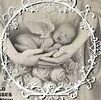Baby clothing is adorable, but it can be overwhelming for new parents. Whether you have friends or family members who are giving newborn clothes as gifts, or you’re shopping for your own little one, there are some basic terms to know that can help you understand what’s on the tag.
Body Clothes
Newborns need simple, warm layers that are easy to dress and undress. A cotton bodysuit is the ideal base, as it’s soft and stretchy, making diaper changes quick and easy. It may also have fold over scratch mitts on the sleeves to protect your baby from accidental scratches and nicks.
A hat is a must-have accessory to keep baby’s head warm, especially during the winter. You can find hats made of wool, fleece, faux fur and other materials. Many also have a brim or other covering to prevent sun exposure, which is important for young babies.
You’ll also need a few long-sleeve kimono or wrap-style tops, which are great for skin-to-skin contact during breastfeeding. You can also find tops with snaps across the front that make changing baby much easier.
For the lower body, you’ll want pants or trousers, shorts, leggings or joggers, depending on the season. These can be stretchy or elastic, and they’re a great choice for newborns because of their flexibility and comfort.
During cold weather, you’ll also need a coat or snowsuit to keep your baby warm and protected. You can get a coat that’s light and waterproof or an insulated snowsuit. A parka, or a heavy coat with hood, is another option for very cold weather.
Your baby will need underwear, too, so be sure to stock up on infant socks, pantyhose and underwear in a variety of colors and styles. You’ll also need a few pairs of footie PJs or gowns for nighttime, as your baby will likely need to be changed several times throughout the course of a single night.
It’s a good idea to consult a baby sizing chart for the brand you’re buying, as some brands run smaller or larger than others. You may even notice that some sizes have different names in other countries, such as Euro size 100, which will fit a baby between 31 and 38 pounds or up to 40 inches.
You can probably start with 0-3 month clothes right away, as most babies will fit into these sizes right after birth and grow into them over the first month to 6 weeks. After that, you’ll need to switch out the 0-3 month items for some 6-12 month clothing to match your baby’s actual growth rate. You’ll likely need to do more laundry, but it’s better than having too little clothing available for your newborn.
